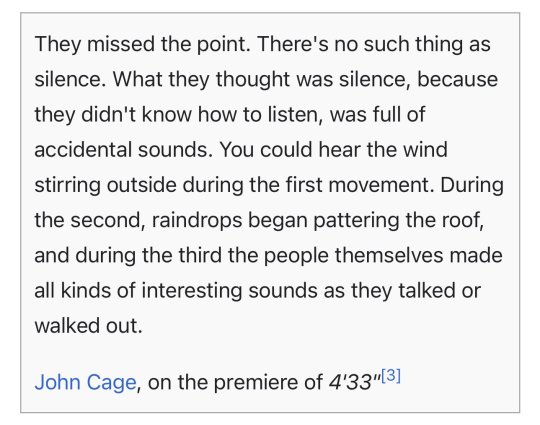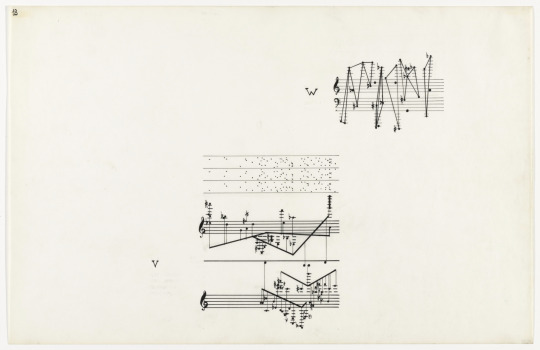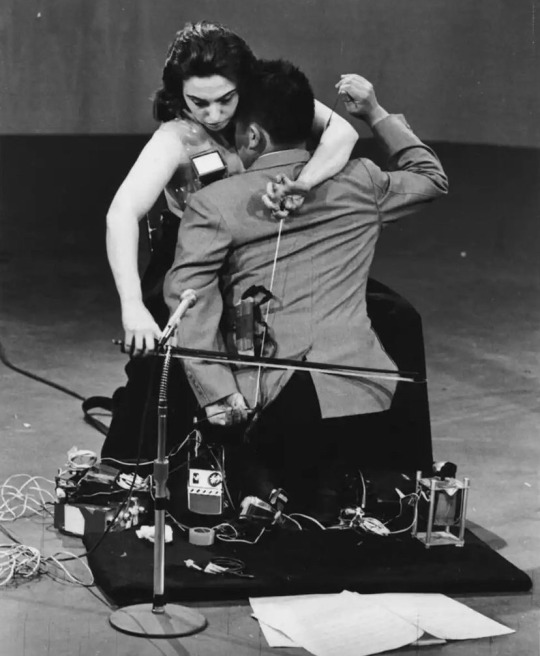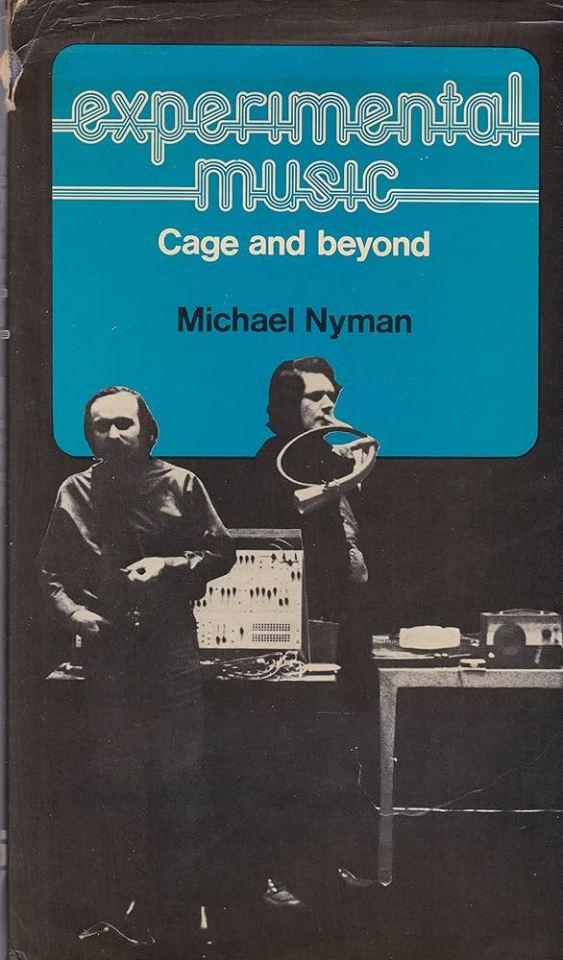#John Cage
Explore tagged Tumblr posts
Text

John Cage, Indeterminacy 6.
he normally followed this with ‘there is nothing to fear for the future of music.’ a pivotal moment for the creation of 4’33
#John cage#the explanation has been much contested. that’s the joke it’s just a specific thing for me
2K notes
·
View notes
Text

"Ten Rules," Sister Corita Kent (lettering by David Mekelburg), 1960s.
1K notes
·
View notes
Text


681 notes
·
View notes
Text

John Cage, September 5, 1912 – August 12, 1992.
With the Merce Cunningham Dance Company in 1966.
203 notes
·
View notes
Text

Sun Ra and John Cage
102 notes
·
View notes
Text

John Cage Page 18, Solo for Piano, from Concert for Piano and Orchestra (1958)
168 notes
·
View notes
Text

“26.’1.1499” by John Cage, performed by Charlotte Moorman and Nam June Paik in 1971
2K notes
·
View notes
Text

John Cage at Stony Point, NY, 1965 photographed by William Gedney
91 notes
·
View notes
Text

10 rules for students and teachers, by John Cage
157 notes
·
View notes
Text
for every action there is an equal and opposite reaction, so that means to combat John Cage's 4'33, I propose a piece called 3'44, wherein every single note within range possible is played for three minutes and forty-four seconds
#absence of playing? meet PLAYING EVERYTHING ALL AT ONCE WALL OF SOUND#john cage#4'33#classical music#post-modern music#this cannot be done by singular wind instruments mind you but ensembles can if those wish to perform it via wind instruments#my vision is either played on piano or harp or a plucked zither tho
369 notes
·
View notes
Text
D.C.: Then art as you define it is a discipline of adaptation to the real as it is. It doesn't propose to change the world, it accepts it as it presents itself. By dint of breaking our habits, it habituates us more effectively. J.C.: I don't think so. There is one term of the problem which you are not taking into account: precisely, the world. The real. You say: the real, the world as it is. But it is not, it becomes! It moves, it changes! It doesn't wait for us to change...It is more mobile than you can imagine. You are getting closer to this reality when you say as it "presents itself"; that means that it is not there, existing as an object. The world, the real is not an object. It is a process.
For the Birds: John Cage in Conversation with Daniel Charles
69 notes
·
View notes
Text

John Cage, A Year From Monday
213 notes
·
View notes
Text

John Cage and Marcel Duchamp, 27'10.554" For A Percussionist / The Bride Stripped Bare by Her Bachelors, Even. Erratum Musical (First Recordings), SR 9017, Finnadar Records, 1977 [Fondazione Bonotto, Colceresa (VI). © John Cage Trust / Estate of Marcel Duchamp, ARS, New York / ADAGP, Paris]

Musics by John Cage and Marcel Duchamp Performed by Donald Knaack
Liner Notes: Donald Knaack Art Direction, Design: Lynn Breslin Photography: Peggy Knaack
#graphic design#art#fluxus#music#music album#vinyl#cover#john cage#marcel duchamp#donald knaack#lynn breslin#peggy knaack#john cage trust#finnadar records#1970s
30 notes
·
View notes
Text

John Cage, Merce Cunningham, and Robert Rauschenberg, New York City, May 2, 1960.
photo: Richard Avedon. © The Richard Avedon Foundation
239 notes
·
View notes
Text

Experimental Music: Cage and Beyond by Michael Nyman
Michael Nyman is a composer popularly known for his film scores for movies such as The Piano, Gattica and his collaborations with filmmaker Peter Greenway.
(Side note is you have someone who for some reason is still holding on to their Harry Potter fandom and you want to RUIN their thoughts about beloved Dumbledor. Have them watch Peter Greenway's The Cook, the Thief, His Wife & Her Lover.)\
But before he paid the bills with film scores he spent some time in the Conceptual Avant Garde music scene of the 60's. This book is a firsthand account of his time in the conceptual and experimental art scene.
If you interest in music is a more historica, philosphical, conceptual and more academic you might like this book.
You can get it from my Google Drive HERE
195 notes
·
View notes

